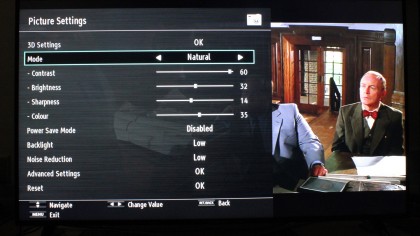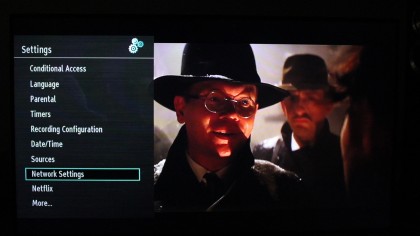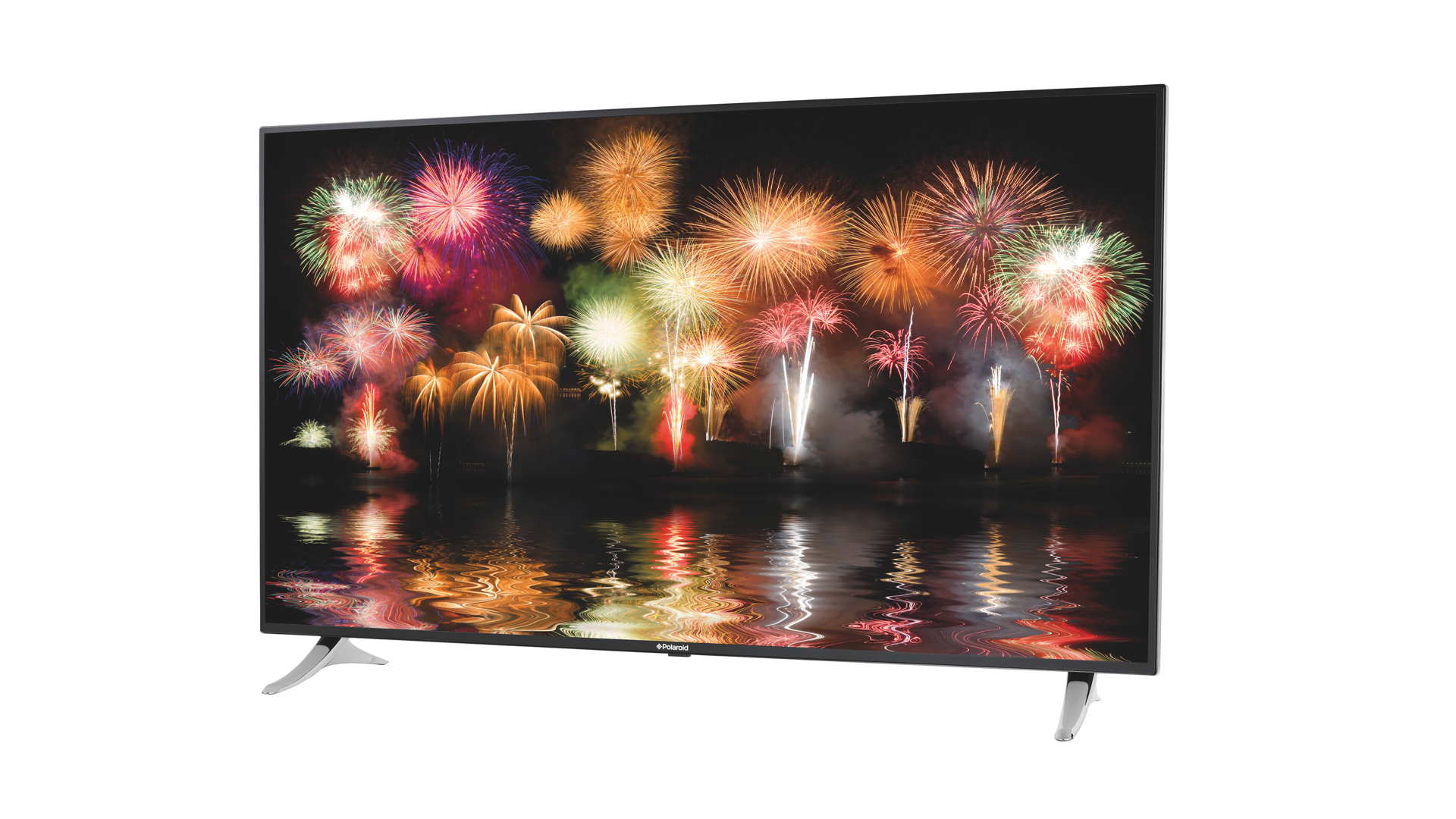Why you can trust TechRadar
Straight from the box, this Polaroid set impresses.
Its images are sharp and snappy. Perhaps unsurprisingly, you won't find a surfeit of image manipulation on offer – just the usual selection of picture adjustments (Contrast, Brightness, Sharpness, Colour ), plus a variety of picture presets: Natural, Cinema, Game, Sports and Dynamic.
These are augmented by more advanced picture management tools like Backlight control and Dynamic Contrast.
The P55D600 doesn't offer additional high refresh rates or similar image interpolation tech, indicating that it's a tad lean when it comes to heavy image processing. As a result, motion handling is somewhat limited.
You can't influence the set's behaviour in regard, this is a basic 50/60Hz display.
On the plus side this means that there's no need to get het up trying to optimise screen settings for movies and sport. This is a one size fits all proposition. As it turns out, that's not necessarily a bad thing - there are no artefacts around moving objects and movies look like movies. Horizontal pans exhibit a little judder, but it's not excessive. Pictures are very cinematic.

The more I watched this modest Polaroid, the more I liked it.
The panel itself bristles with detail. In its multipurpose Natural mode, HD TV studio fare has real zing and Blu-rays are vibrant. When Edward Norton is gas canistered into The Incredible Hulk by William Hurt, he becomes a deep, trademark green, the assaulting army camos are lush and forestry.
There's also a genuinely precious lustre to golds and metallics. When Abe Sapien throws the missing part of the Elven crown to Prince Nuada (Hellboy II The Golden Army), thereby unleashing the steampunk army, the screen glints in appreciation.
The presets actually serve the P55D600 well.
Rather than try to drag the image down to near unwatchable dullness, the Cinema mode simply nudges down colour saturation and tweaks brightness. The end result suits low light viewing, without getting too contrasty.
But there are caveats.
In its default shipping condition, the TV has exaggerated edge-enhancement, presumably for extra snap when viewed at distance. Unfortunately, this looks fairly frightful at a normal viewing distance.
Sharpness should actually be set to zero. Anything higher simply introduces unwanted ringing artefacts.
It's also likely that you'll experience problems if you leave the set's Backlight Control in Auto mode. Uma Thurman's live burial, in Kill Bill Vol 2, is notoriously difficult to display. As the nails are hammered into her coffin and the light extinguished, the panel decided there's just not enough signal to warrant staying on and switches itself off. In fact, it goes on and off in quick succession, as she struggles in the darkness.
Switch the Backlight control from Auto to Low, and the panel stays awake.
Backlight uniformity is a little uneven, with pools of light in the corners and splotchy clouds caused by the set's lightguide. But I've seen worse on sets costing twice as much.
Local dimming is best described as unsophisticated. As a result, there's no pronounced backlight clouding around highlights, but equally those highlights aren't particularly bright either.

The set's 3D performance is 50/50.
That's to say, when half the screen is in focus and the other half is a forest of double imaging. This Polaroid features passive polarisation, which should be good news as 4K panels suffer less from the resolution sacrifice the technology requires. However, the implementation is extremely directional. You'll need to be absolutely square on to enjoy any type of 3D depth. The title text during the opening dream of I, Robot, looks as submerged as the occupant within the sunken vehicle.
Familiar 3D torture test Tangled is even worse.
The menu screen suffers from a bewildering multiplicity of floating lanterns and menu text. For what it's worth, brightness and colour reproduction during 3D remain good. The panel ships with no fewer than eight cheapo passive 3D glasses.
But, but, but...it's all too easy to forget these shortcoming when you kick back and actually watch some telly.
Proto HDR warfest Band of Brothers (Blu-ray) looks terrific. The heavily stylised cinematography, all high contrast and grain, is delivered with style and no obvious additional artefacts. Blacks are crisp against the snowy battlefield, motion is free of mpeg artefacts.
The great thing about the Polarioid P55D600 is that the pixel density encourages close quarter viewing. This is an easy image to like. I don't get the impression the set is doing anything other than a linear upscale, but the end result is really satisfying.
Significantly, the set also looks great with 4K source material.
There's no HEVC decoder, so the Netflix client can't offer Ultra HD streams. However, I hooked up a Sony FMP-X5 UHD media player which does has a Netflix 4K client, allowing me stream native UHD content into the Polaroid's HDCP 2.2 HDMI input.
Netflix original Marco Polo is a feast of fine detail. You can peer deep into crowd scenes, where edges remain clearly delineated at extreme close up. There's an enviable clarity to its images.
Sonically, the speaker deployment is conventional, with two downward firing stereo channels. The sound presets are actually quite comprehensive, with User, Music, Movie, Speech, Flat and Classic, augmented by detailed equalisation settings. Indeed, the software at work here outreaches the drivers and acoustic engineering in the set.
The audio is inevitably thin, making the set a prime candidate for soundbar augmentation.
Steve has been writing about AV and home cinema since the dawn of time, or more accurately, since the glory days of VHS and Betamax. He has strong opinions on the latest TV technology, Hi-Fi and Blu-ray/media players, and likes nothing better than to crank up his ludicrously powerful home theatre system to binge-watch TV shows.

